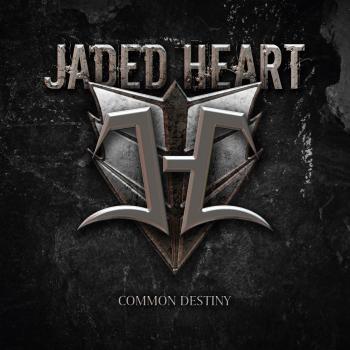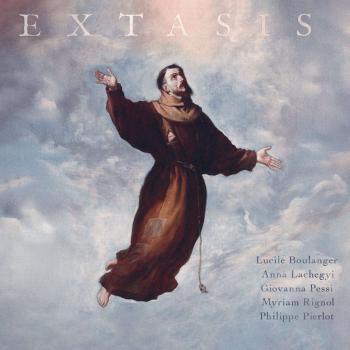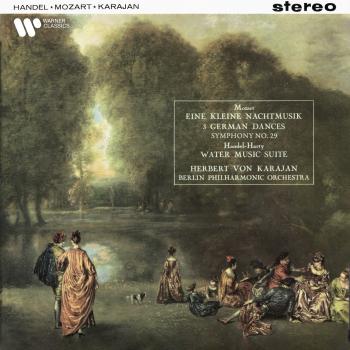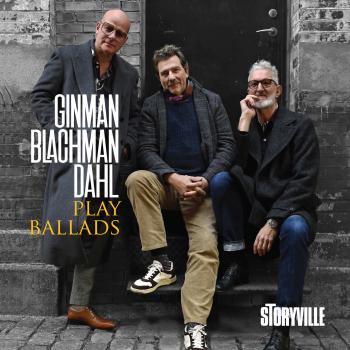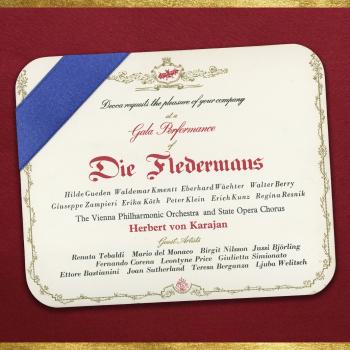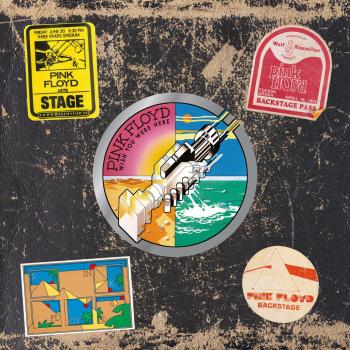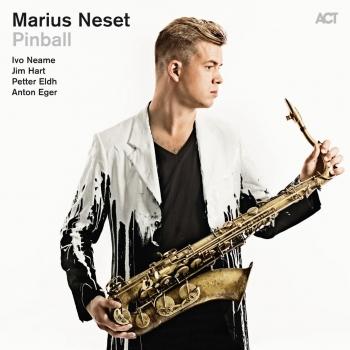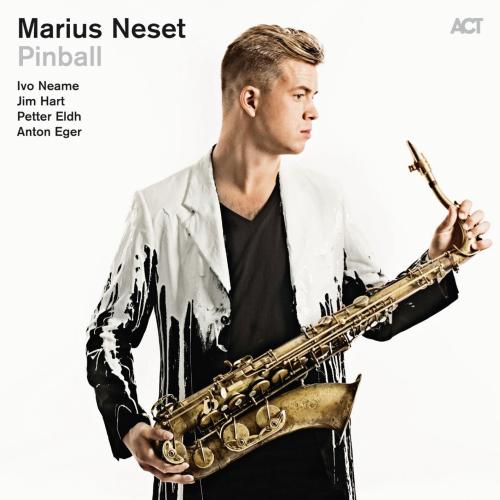
Pinball Marius Neset with Ivo Neame
Album Info
Album Veröffentlichung:
2015
HRA-Veröffentlichung:
29.01.2015
Label: ACT Music
Genre: Jazz
Subgenre: Mainstream Jazz
Interpret: Marius Neset with Ivo Neame, Jim Hart, Petter Eldh & Anton Eger
Das Album enthält Albumcover Booklet (PDF)
- 1 World Song, Pt. 1 08:43
- 2 World Song, Pt. 2 06:25
- 3 Pinball 06:51
- 4 Odes of You 06:53
- 5 Police 06:10
- 6 Music for Cello and Saxophone 03:18
- 7 Theatre of Magic 06:26
- 8 Aberhonddu 03:34
- 9 Jaguar 02:54
- 10 Music for Drums and Saxophone 02:20
- 11 Summer Dance 05:59
- 12 Hymn from the World 01:45
Info zu Pinball
„Marius Neset ist einer der neuen großen Tenoristen unserer Zeit in der Tradition von Michael Brecker und Jan Gabarek” (Jazzwise). „Seine erfinderische Kraft ist beeindruckend“ (Jazzthetik). Nach dem Ausflug in das größere Bandformat auf seinem ACT Debüt „Lion“ mit dem Trondheim Jazz Orchestra, kehrt der norwegische Saxofonist für „Pinball“ wieder zum kompakteren Quintett (mit Gästen) zurück. Indes bleibt die kompositorische und spielerische Vielschichtigkeit erhalten und zugleich klingt Neset auf dem neuen Album so reif, seelenvoll und melodisch wie wohl nie zuvor. Und so dürfte „Pinball“ den nächsten großen Sprung in einer so jungen wie eindrucksvollen Laufbahn einläuten.
Mit Klatschen geht es los. Erst ganz langsam, dann immer schneller entfacht die Band nur mit den Händen einen rhythmischen Wirbelsturm; genau wie sich das dazu einsetzende Saxofon seine elegische Melodie bald in wilde Sprünge, Tempoläufe und chromatische Harmonieverschiebungen trägt, Zug um Zug begleitet von Rhythmusgruppe, Geige, Marimba und Flöte. Die rasende, fast indisch beginnende, dann über serielle Muster und Modern Jazz bis zu südafrikanischer Hymnik führende Fahrt endet unvermittelt in einer hauchzarten Cello-Coda: Was Neset schon beim einleitenden „World Song“ inszeniert, ist ein mitreißendes Beispiel für die neue Kraft, die der aktuelle Jazz aus der Umarmung anderer Stile und Genres gewonnen hat.
Mit seinen erst 30 Jahren ist Neset einer der führenden Protagonisten einer Musikergeneration, die dem europäischen Jazz neue Impulse geben und Perspektiven aufzeigen, ein „Young European Lions“, der mit seiner Klangsprache einen ganz eigenen Weg gefunden hat. So wie ein Vincent Peirani am Akkordeon, ein Emile Parisien am Sopransaxofon oder ein Adam Baldych an der Geige die Grenzen ihrer Instrumente neu definieren, oder so wie ein Michael Wollny die Freiheit des Klavierspiels und den Klang des traditionellen Klaviertrios erweitert, so führt auch Marius Neset die Technik des Saxofonspiels in eine neue Dimension: „Neset verliert sich nicht im Überschwang der Experimentierlaune, auch nicht im modischen Liebäugeln mit dem Pop. In jedem Moment ist ein Plan dahinter zu erkennen. Es ist ein Zipfel von der Zukunft des Jazz.“ (Frankfurter Rundschau)
Man darf darauf wetten, dass der Tenor zu Nesets neuem Album „Pinball“ nicht anders ausfallen wird. Alleine „Music for Drums and Saxophone“ ist ein Kabinettstück für sich: Eine hochkomplizierte, aber souverän groovende Stakkato-Studie tonlos geblasener Klicklaute, sofort noch an Tempo und Komplexität übertroffen vom wild wirbelnden, orchestralen „Summer Dance“. Der Titeltrack ist ein höchst komplexes, zugleich erstaunlich eingängiges Vexierspiel, das programmatisch für das Album steht: „Der Titel Pinball drückt sehr gut aus, dass hier immer Überraschendes passiert, wir alle ständig auf den Richtungswechsel des anderen reagieren. Kein Stück könnte zwei Mal gleich gespielt werden. Zugleich gibt es aber immer eine Spielidee und ein Thema. Für mich persönlich ist dieses Album vor allem die Weiterentwicklung in eine melodiösere Richtung“, sagt Neset.
Dazu passt, dass Neset in seine angestammte Band mit Anton Eger am Schlagzeug, Petter Eldh am Bass und Ivo Neame am Klavier auch noch Jim Hart an Vibrafon und Marimba geholt hat, einen der herausragenden jungen britischen Jazzer: „Seine Art zu spielen, mit seinem gleichzeitig melodischem wie rhythmischem Ansatz, warm und mit vielen perkussiven Farben, schien mir perfekt zu dem Projekt zu passen“, erinnert sich Neset. Denn für Nesets Musik ist prägend, dass er als Fünfjähriger zunächst Schlagzeug lernte: „Ich denke, das Schlagzeug gab mir eine rhythmische Basis, die sehr wichtig ist. Ich lernte sehr früh, in ungeraden Metren zu denken und zu spielen, sodass ich ein sehr natürliches Gespür dafür habe, denke ich.“ Das erleichtert die Herausforderung, „verschiedene Einflüsse, Ideen und Themen in einen Song zu packen, ohne dass er seinen flow verliert“, wie es Neset formuliert.
Eine Herausforderung, die er auf „Pinball“ konkurrenzlos gemeistert hat. Nicht nur rhythmisch, melodisch und stilistisch ist das Album ein Füllhorn, auch was instrumentale Klangfarben angeht: „Wir können alles als Quintett spielen, aber wann immer ich für das Album das Gefühl hatte, dass es mit einem weiteren Instrument noch runder klingt, habe ich es dazu genommen“. So einmal das Tamburin von August Wanngren, zweimal die Violine von Rune Tonsgaard Sörensen, drei Mal die Flöte seiner Schwester Ingrid Neset und auf vier Titeln das wunderbare Cello von Andreas Brantelid - ganz bewusst alle keine originären Jazz-Musiker: „Ich wollte noch eine andere Art des Spielens, einen weiteren Zugang zu meiner Musik gewinnen.“
Und so ist „Pinball“ mehr denn je eine von Marius Nesets spieltechnischem wie kompositorischem Genie wundersam zusammengehaltene, in die Zukunft weisende Kombination von bislang Unkombiniertem, Ungehörtem. Spannender als jedes Flipperspiel.
Marius Neset, tenor and soprano saxophones
Ivo Neame, piano, Hammond B3 organ, CP 80, clavinet
Jim Hart, vibraphone and marimba
Petter Eldh, double bass
Anton Eger, drums and percussion
Additional musicians:
Andreas Brantelid, cello (on track 1, 2, 6 and 7)
Rune Tonsgaard Sørensen, violin (on track 1 and 11)
Ingrid Neset, flute (on track 1, 5 and 11)
August Wanngren, tambourine (on track 3)
Recorded by Henning Vatne Svoren at Ocean Sound Recordings, 30th June - 2nd July 2014
Mixed by August Wanngren at We Know Music Studios
Mastered by Thomas Eberger at Stockholm Mastering
Produced by Marius Neset and Anton Eger
Marius Neset
was born in 1985, in Bergen, a sleepy Norwegian harbour town that’s home to the internationally renowned Nattjazz Festival (Neset won the Talent Award there in 2004). Besides his love of jazz in its widest sense, the saxophonist-composer also grew up listening to bands from the so-called ‘Bergen wave’ of post-rock such as Royksopp (and from there on to Radiohead) through to the great classical composer of his hometown Edvard Grieg as well as more contemporary art music. “I love being in the mountains, and silence is a music as well. Maybe it’s because I’m from Norway I feel this,” he says. It accounts for the huge diversity and fluidity of movement between different elements of so-called genres that’s been a key characteristic of Marius Neset’s music to date.
When only 5 years old, before taking up the sax, he took lessons on drums and this has had a significant impact on his approach to composition in particular. “I think the drums gave me a rhythmic base that was very important. I learnt very young to play in these odd meters so I think I have a very natural feel for it,” he says. Neset, in live performance, also has the uncanny ability of making one saxophone sound like two or three.
In 2003 Neset moved to Copenhagen to study at the Rhythmic Music Conservatory. The great English pianist and large ensemble arranger Django Bates was professor there at the time and became Neset’s mentor. The saxophonist went on to become the star turn in Bates’ student big band StoRMchaser recording a CD Spring is Here (Shall we Dance?) in 2008. Meanwhile Neset also released his debut Suite for the Seven Mountains that year on the Danish Calibrated label. Besides a string quartet, it featured the Swedish drummer Anton Eger, who alongside Neset was also a leading member of Scandi-fusion boy band JazzKamikaze. In 2010 Django Bates took him to London to play at a concert at Kings Place marking his 50th birthday. Neset also appeared as a guest in Django Bates’ long time ensemble Human Chain at the famous Ronnie Scott’s club. Recorded by BBC Jazz on 3 he wowed the audience with his contrast of lightening virtuosity and tender, ethereal lyricism. One of those blown away was Dave Stapleton head of the fast emerging UK independent jazz label Edition Records.
Edition signed Neset to the label in 2011. GoldenXplosion, featuring a quartet that included Django on keys and the Scandi-Brit trio Phronesis’ rhythm section of Jasper Hoiby and Eger, was released to glowing press reviews with The Guardian writer John Fordham accurately predicting Neset would be, “on his way to being one of the biggest new draws on the circuit”. By the time of his second CD on Edition Birds in 2012, Neset had started developing his penchant for larger ensemble music and a widescreen palette of instrumental sound.
Still only 29 years of age, Neset is successfully hitting the international stage, and being talked about as a big tenor in a lineage that extends from the post-bop Americans from Michael Brecker, Chris Potter through to fellow Norwegian Jan Garbarek. But there’s a lot more to one of Europe’s brightest young stars than that. “I’m very inspired by people like Frank Zappa, Django Bates, Pat Metheny and Wayne Shorter where the music and the playing is one,” he has said. Neset’s classy, cohesive composition and arranging skills have come into even sharper focus with a new album Lion released in 2014, his debut for the Munich-based ACT, one of Europe’s leading jazz labels, in a collaboration with the celebrated Trondheim Jazz Orchestra, whose former collaborations have boasted the likes of Chick Corea and Pat Metheny. It was originally a commission to compose for the 13-piece orchestra (in a lineup that includes tuba player Daniel Herskedal, a fellow student at RMC who together released an impressive duo album Neck of the Woods in 2012.) for a concert at the 2012 Molde Jazz Festival. “After the premiere in Molde, these compositions felt so special that we decided to record this album and play many more concerts with it,” he says.
Booklet für Pinball

